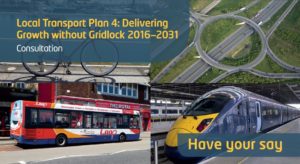Q7. To what extent do you agree or disagree with the District Priorities [for Ashford] for the Local Transport Plan? (Pages 41 to 42 in the LTP)
Travel in Ashford is currently dominated by the private car, but the area is largely flat which makes travel on foot or by bicycle easy and feasible. The M20 runs through the district and bisects the town, connecting the area with the Channel Ports to the south and Maidstone and London to the north. Generally, the M20 operates with spare capacity but when Operation Stack is called the town is heavily congested as all motorway traffic is diverted via Junction 9 through the town. Further, the capacity of Junction 10 is restricting development to the south of the Ashford urban area, as both strategic and local traffic place high demand on this junction. A preferred route for a new motorway Junction 10a has been identified and Highways England is currently progressing towards the submission of a Development Consent Order (the approvals process for major infrastructure) to Government in 2016. Ashford is a growing town and development pressures on the transport network must be considered.
Ashford is historically a railway town and consequently it has rail connections to Maidstone, Canterbury, Tonbridge, Folkestone and Hastings, as well as internationally via the Channel Tunnel. The bus network includes urban, inter-urban and rural services; and Stagecoach is the main bus operator in East Kent.
The A28 Chart Road improvement scheme is critical to the delivery of 5,750 homes at Chilmington Green and the reduction in congestion along this route is a priority scheme for both Ashford Borough Council (ABC) and KCC. ABC also plans to promote Ashford as a Cycling Town. The delivery of an improving cycle network and the doubling of cycle parking at Ashford International Station in 2015 (as well as its 2010 Station of the Year award in the National Cycle Rail Awards) provide opportunities to capitalise on the use of this mode of transport.
Q7a. Please add any comments on the District Priorities [for Ashford] for the Local Transport Plan
 South Ashford Community Forum have started a review of the Draft Local Transport Plan prepared by Kent County Council.
South Ashford Community Forum have started a review of the Draft Local Transport Plan prepared by Kent County Council.
